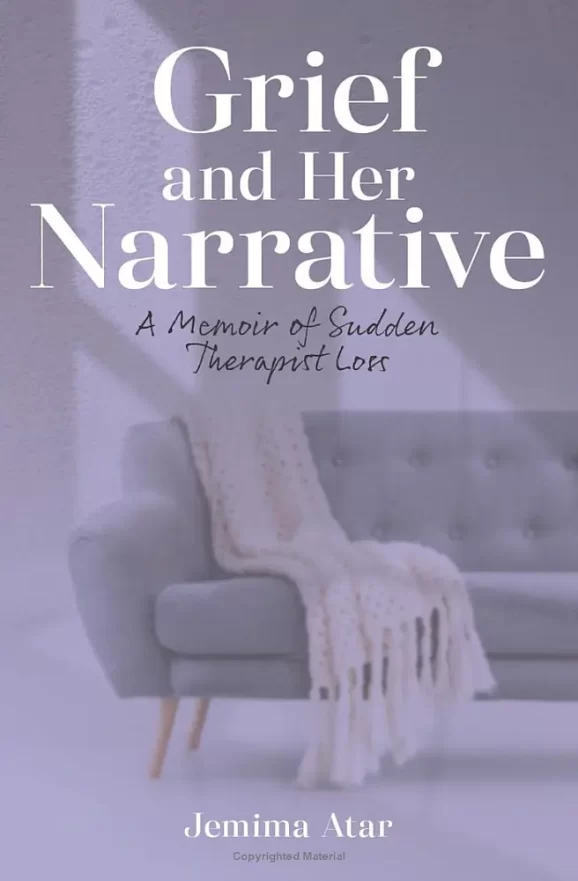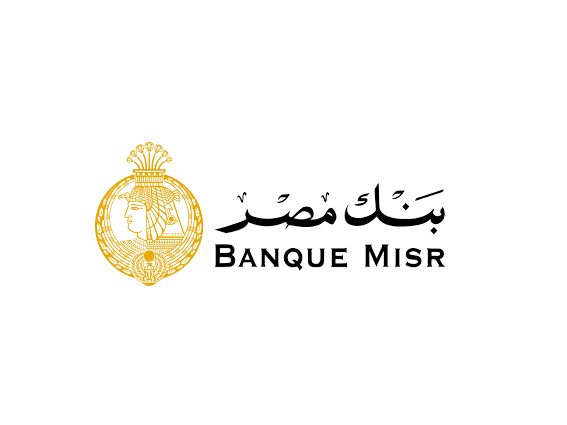The art of coping with trauma lies in moving through it

John E. Kaye

As a bestselling author and trainee psychotherapist, Jemima Atar helps clients and readers alike recognise, respond to, and recover from trauma. Here, she explains the art of trauma healing.
By Jemima Atar
Originating from the Greek word for ‘wound’, trauma is multifaceted in both its definition and its manifestation.
Trauma can refer to extremely stressful events that are too big to cope with, resulting in long-term negative effects.
Some researchers have distinguished between ‘Capital-T traumas’, relating to typically traumatic or threatening circumstances such as sudden loss of a loved one, and ‘small-t traumas’: events or circumstances that are traumatic on a personal level, but not as obviously or typically threatening.
Another perspective can be found in the works of Dr. Gabor Maté, a physician renowned for his expertise in addiction, trauma, stress, and child development, who states that trauma is not defined by the stressful event that has occurred, but rather by what happens inside someone as a result of the stressful event.
In whatever way one defines trauma, what is important to realise is that most people have in all likelihood been afflicted with a ‘small-t trauma’ at the very least. And these traumatic experiences, as well as the wounds they inflicted, deserve to be addressed.
Addressing Trauma
But why does trauma need to be addressed? Can we not afford to simply let sleeping dogs lie?
For a while, we can. Time plays an important role in healing from trauma, and if our inbuilt ‘emotional Band-Aids’ need to utilise defence mechanisms such as repression or denial for a while, that must be respected.
But the issue is that sleeping dogs won’t stay that way for very long. Defence mechanisms might be necessary and even life-saving, but there comes a point when they no longer serve us.
At that stage, we may find that we function well in society, despite having been through trauma, and so we do not feel the need to address anything.
And yet, we might feel fundamentally empty or flawed at our core.

Trainee psychotherapist Jemima Atar says that when we have suffered trauma, it impacts every corner of our lives whether we are conscious of it or not. It is, therefore, essential to recognise and process trauma for greater professional success and personal contentment.
Our deep-seated beliefs, originating from our trauma-filled script, might cause us to self-sabotage in our professional lives.
And outside of the office, we might struggle with intimate relationships and friendships, perhaps pushing others away or needing them a bit too much.
Alternatively, we might have an anger problem, or feel emotionally numb.
The bottom line, though, is that the extent to which we present ourselves as ‘functional’ doesn’t matter. Trauma affects us in every corner of our lives whether we are conscious of it or not.
Learning to understand and cope with both the trauma itself and its manifold residual aftereffects will lead us towards more integrated, fulfilled, and meaningful professional and personal lives.
Understanding and Coping with Trauma
The first step towards healing from trauma is moving through it.
Healing occurs when we fully confront our traumatic experience and delve into what it meant for us, how it affected us, and how we feel in the present — on an emotional and a physical level — as a result of that experience.
This is important primarily because of the unique ways trauma manifests itself in affected individuals.
Some of us might, for instance, struggle with ‘hypervigilance’, living in a state of elevated fear, tension, and alertness to surroundings.
Hypervigilance is theorised to be the result of high amounts of stress increasing the activity of the limbic system, making up part of our ‘emotional brain’. This, in turn, reduces the capacities of our ‘rational brain’, which is responsible for understanding, judgment, and awareness.
The failure of the ‘rational brain’ to inhibit the ‘emotional brain’ is what can lead to hyperarousal, even in the presence of mild pressures.
Others might struggle with dissociation, feeling disconnected and detached from themselves and the world at large. In contrast to those experiencing hypervigilance, people with dissociation usually have increased activity in the ‘rational brain’ and decreased activity in the ‘emotional brain’.
Other individuals might struggle with flashbacks: traumatic memories sporadically entering their consciousness.
The neuroscientific explanation for this is that the thalamus, a brain area involved in relaying sensory information to allow for experiences to be integrated into a comprehensible narrative, shuts down during trauma.

As well as establishing a promising career in psychotherapy, Jemima Atar is rapidly cementing her status as one of Britain’s most exciting and original new authors.
This explains why flashbacks are reexperienced in the form of fragmented (‘unintegrated’) pictures, emotions, and sounds that feel like they have no end to them.
Healing through trauma is therefore about understanding how trauma has affected our bodies, our brains, our psyches, and our spirits.
What Does Healing Look Like?
Once we’ve delved into our trauma, understanding it for what it is, the healing journey has begun.
But that’s not all. Healing also includes setting more boundaries, nurturing the self, realising what brings us meaning in life, grieving what happened to us (and the years we feel we might have lost), and learning to recognise and handle the full range of emotions that comes with healing from trauma.
Paradoxically, this means that healing might involve feeling a lot more sadness than we ever did before but, simultaneously, a lot more joy, a lot more gratitude, and a lot more excitement.
Healing, then, consists of learning to be compassionate to ourselves and to others, seeing things from new and more wholesome perspectives, finding a genuine will to live, avoiding less and learning in more.
As we heal, we will become more open to difficult conversations and challenging journeys. We will have safer and more fulfilling relationships, and we will approach the world with less fear.
It must be noted, however, that coping with trauma is a lifelong pursuit — and one that we can most skilfully and gently navigate by working with a supportive professional, such as a therapist.
Bessel Van Der Kolk, an expert researcher and author on trauma, wrote in The Body Keeps the Score that “Trauma by nature drives us to the edge of comprehension, cutting us off from language based on common experience or an imaginable past’.
In committing to the healing process, we can start to comprehend again, and find the language to piece together our old narrative and write our new one.
Jemima Atar is the author of Grief and Her Narrative: A Memoir of Sudden Therapist Loss and bestselling poetry collection You are safe now, both of which are available on Amazon. Visit www.jemima-atar.com or follow Jemima Atar on Twitter.
Q&A Interview With Jemima Atar
Jemima Atar is a multifaceted author with an expertise in mental health, psychotherapy, and psychology. We caught up with her to find out about the field of therapy and her writing, including her forthcoming debut novel Pourquoi, a thought-provoking work of literary fiction that explores the blurring of a therapeutic relationship into an ethically questionable romance.

Q. As a trainee psychotherapist, what is the biggest misconception you find among the public about the value of seeking therapy?
A. There are lots of myths about therapy, some containing a grain of truth to them and others being blatantly untrue and unhelpful. I find that most people do value therapy, at least from an intellectual perspective. The misconception lies in the belief that perhaps they don’t need it themselves, or that it won’t do them any good or that ‘therapy is for crazy people whose lives are falling apart’. Such misconceptions are understandable, given the stigma that still surrounds the act of seeking therapy, but would benefit from some exploration and challenging.
Q. You are particularly interested in existential therapy. In brief, what is this form of therapy and why is it so exciting for you?
A. Existential therapy emphasises core concepts that apply to human existence universally, such as themes of death, responsibility, freedom, and the meaning of life. Existential therapy also highlights that the key problems we face — such as isolation, anxieties, depressions — are not indicative of mental illness but, rather, are natural human processes that need to be explored to examine their meaning. I find this a controversial but appealing perspective, moving towards inclusivity and away from ‘othering’ and labelling, and I’d be curious to understand its implications in therapeutic work. I haven’t formally trained in this modality as of yet, although my largely humanistic approach is closely connected to the existential approach. And so, what also excites me about existential therapy is that it is a new modality for me to delve into in my further training and work!
Q. You will soon be commencing a doctorate in the field. What first attracted you to psychotherapy as a profession?
A. Initially, psychotherapy appealed to me for the simple reason that I enjoyed listening to people’s stories, and I found it meaningful to be able to walk alongside someone on an otherwise hugely isolating journey of navigating extreme pain. As I began my training, this pull towards the field deepened, and I realised how intensely real and human this profession was, how seeing parts of people they might not have shown anyone else was a humbling privilege, and how making a difference in someone’s life in this way just made total sense to me.
Q. Outside of your studies and therapy work you are a writer and one whose books explore different elements of mental health. Why do you think these two different disciplines complement each other?
A. I find that writing and therapy share common features in that they are both about creativity, stories, seeking truths, using language to aid understanding, and healing. The disciplines complement one another as they are different modalities with which to express. Talking therapy is largely about expression through spoken word and body language, and writing is about expression using tangible words on a page.
Writing fiction, in particular, is about creating characters from the outside looking in, working to build up unique personalities starting with the basics, whereas therapy is about us and therefore works by externalising the internal. Together, they provide different angles through which to self-express and explore human nature.
Q. You have suffered trauma in your own life. How have your books helped with your journey of healing?
A. Creative expression through writing, whether I am directly writing about the traumas that have affected me or more generally about issues close to my heart, is something that I have found immensely healing, especially because of how primal it feels to me. My writing is guided by my heart; it comes from the intuitive part of me, and it knows the way through the jungles of healing much better than the other parts of me do. My books have become extensions of who I am and, thereby, ‘birthing’ them into the world is a little bit like going through my own rebirth. This entire process has been essential to the exploration, catharsis, and subsequent integration that I have found to be paramount in my healing journey.


Jemima Atar is the author of two books that draw upon her psychotherapy training in different ways, Grief and Her Narrative: A Memoir of Sudden Therapist Loss and bestselling poetry collection You are safe now, which explores trauma of sexual abuse and its emotional, physical, and spiritual impact. She is currently working on her debut novel, Pourquoi.
Q. Speaking both as author and psychotherapist, what do you wish your readers to gain most from your books?
A. I hope for my readers to gain a greater understanding of themselves and, more generally, a greater understanding of the complexity, suffering, and growth that characterises human nature. In this, I also wish for my readers to have more compassion towards themselves, their experiences, and towards others than they may have had before. People who aren’t familiar with the field of psychotherapy will hopefully learn more about its workings and its value after reading my books.
Ultimately, I wish for my readers to progress in their own healing journeys, and to find or enhance their own voices of expression.
Q. You have just completed your first novel, Pourquoi. What can you tell us about the story?
A. Pourquoi is about two people who meet in a therapeutic context and undergo transformations in their relationship, with themselves and with each other, through connection and discussion. Both characters are incredibly complex and while their inner workings are spelled out to the reader, they aren’t always easy to understand. It’s a story about difference, too, in the sense that the characters bond over their similarities and discover themselves by coming up against their differences. As indicated by the title, Pourquoi is about questions: the questions readers will naturally ask about the story such as the potential ethical issues that underly the characters’ actions, the questions that depict the therapy process and, most importantly, the questions readers will begin to ask about themselves.
Q. Writing a novel requires a great deal of time and energy. What has been the most satisfying part of this journey?
A. The investment of time and energy in itself has been the most satisfying part of the journey — but only because this investment was incredibly meaningful to me, and nurtured my connection to myself. The process of writing Pourquoiwas like being in a cocoon where I lived, breathed, and often dreamt the novel, finding myself in a surreal sort of bubble for a few months where nothing mattered other than what I was creating. Engaging with my fictional world in this hyper-focused way, although not sustainable long-term, was very enjoyable and rewarding while it lasted!
Q. Pourquoi explores many potent and sensitive themes, not least the ethical question of a therapeutic relationship progressing into a romantic attachment. Is this known to happen in the profession, and what is your position on the subject?
A. This subject is a multifaceted one with many angles to it. When a romantic or sexual relationship actualises between a therapist and a client, I’d say this is unethical and an abuse of power on the part of the therapist — certainly when the therapeutic relationship has not been officially terminated.
To say that such an abuse of power happens very often would be a misconception. However, there are instances when romantic feelings can develop on either side of the therapeutic relationship, and these feelings can be part of ‘transference’ or ‘countertransference’ (terms I explain in Pourquoi). This is natural, and exploring a client’s feelings can be an important aspect of therapeutic work, as long as there is no danger of them being acted out. A therapist would do well from working through such feelings with a supervisor.
Pourquoi is complex in the sense that it is at times subjective, and at other times, fairly clear when ethical transgressions have occurred. The reader is invited to decide for themselves which ‘category’, so to speak, the various ethical issues belong to.
Q. You already have a bestselling book, poetry collection You are safe now, and are well on your way to becoming a fully qualified psychotherapist. Do you feel that you can maintain both elements of your life satisfactorily in the years to come, or would you consider focusing on one over the other down the line?
A. I’d like to think that I’ll always have some kind of therapeutic work happening in tandem with creative writing throughout my life. That being said, I am open to the balance shifting, and I’m learning to accept that I’m not sure what that balance will look like as I go on!
Whilst I’d love to plan out every step of my life (micromanaging is my default!), I’m working on surrendering to the unknown a bit more at the moment. I’m also hoping to engage in charitable and humanitarian projects in the future, which is another one of my dreams.
Sign up to The European Newsletter
RECENT ARTICLES
-
 Afore SURA awarded Pension Fund Management Company of the Year 2025
Afore SURA awarded Pension Fund Management Company of the Year 2025 -
 BOV Fund Services Limited wins in The European Banking & Finance Awards 2024
BOV Fund Services Limited wins in The European Banking & Finance Awards 2024 -
 Amberdata wins two titles in The European Banking & Finance Awards 2024
Amberdata wins two titles in The European Banking & Finance Awards 2024 -
 Ajman Bank wins in The European Banking & Finance Awards 2024
Ajman Bank wins in The European Banking & Finance Awards 2024 -
 Creditú wins three titles at The European Banking & Finance Awards 2024
Creditú wins three titles at The European Banking & Finance Awards 2024 -
 Krungthai Bank PCL wins five awards in The European Banking & Finance Awards 2024
Krungthai Bank PCL wins five awards in The European Banking & Finance Awards 2024 -
 Oakridge Property Group wins at The European Global Business Awards 2024
Oakridge Property Group wins at The European Global Business Awards 2024 -
 Old Mutual Investment Group wins two titles at The European Global Banking & Finance Awards 2024
Old Mutual Investment Group wins two titles at The European Global Banking & Finance Awards 2024 -
 AXA IM Select wins at The European Global Banking & Finance Awards 2024
AXA IM Select wins at The European Global Banking & Finance Awards 2024 -
 Zenith Bank Ghana wins five titles at The European Banking & Finance Awards 2024
Zenith Bank Ghana wins five titles at The European Banking & Finance Awards 2024 -
 SeABank awarded The Risk Management Bank of the Year - Vietnam 2024
SeABank awarded The Risk Management Bank of the Year - Vietnam 2024 -
 Vista Land & Lifescapes Inc. wins three titles at The European Global Business Awards 2024
Vista Land & Lifescapes Inc. wins three titles at The European Global Business Awards 2024 -
 Boursa Kuwait wins two titles at The European Global Sustainability & ESG Awards 2024
Boursa Kuwait wins two titles at The European Global Sustainability & ESG Awards 2024 -
 Gulf African Bank wins four titles at The European Banking & Finance Awards 2024
Gulf African Bank wins four titles at The European Banking & Finance Awards 2024 -
 Gulf Insurance Group awarded two Global Banking & Finance titles for 2024
Gulf Insurance Group awarded two Global Banking & Finance titles for 2024 -
 Eccelsa Aviation awarded three Global Business 2024 titles, including Best FBO Brand – Europe
Eccelsa Aviation awarded three Global Business 2024 titles, including Best FBO Brand – Europe -
 Afore Sura awarded Pension Fund Management Company of the Year 2024
Afore Sura awarded Pension Fund Management Company of the Year 2024 -
 Toledo Capital AG wins Best Boutique Wealth Management - Family Office 2024
Toledo Capital AG wins Best Boutique Wealth Management - Family Office 2024 -
 Banco de Chile awarded four Global Banking & Finance 2024 titles, including Bank of the Year - Chile
Banco de Chile awarded four Global Banking & Finance 2024 titles, including Bank of the Year - Chile -
 Kontora Family Office GmbH awarded Best Wealth Management Services - Germany 2024
Kontora Family Office GmbH awarded Best Wealth Management Services - Germany 2024 -
 Banque Misr awarded five Global Banking & Finance 2024 titles, including Best Banking Brand - MENA
Banque Misr awarded five Global Banking & Finance 2024 titles, including Best Banking Brand - MENA -
 Krungthai Bank PLC wins five awards in The European Banking & Finance Awards 2023
Krungthai Bank PLC wins five awards in The European Banking & Finance Awards 2023






















